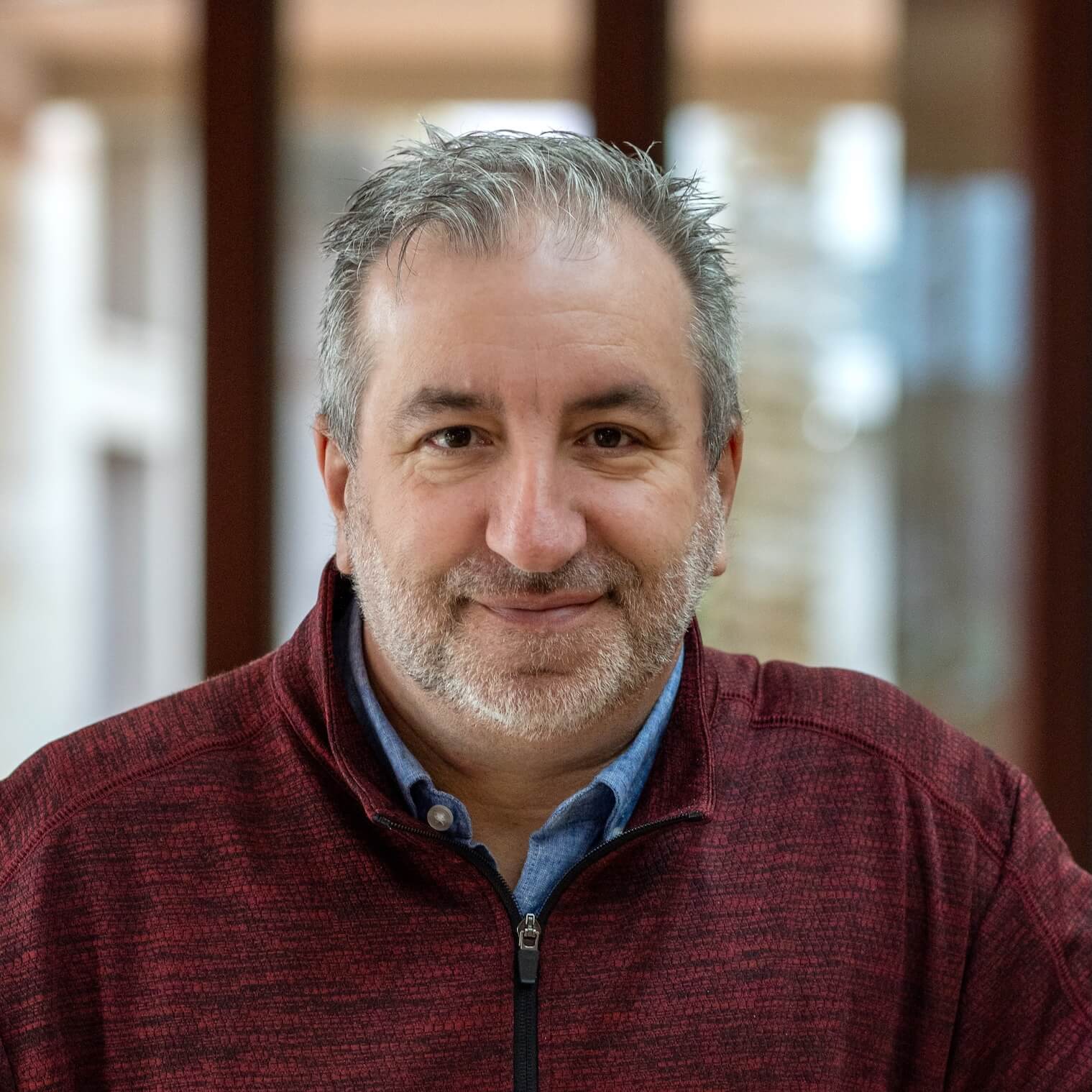On Tuesday, CNN senior national correspondent David Culver had exclusive access to El Salvador’s high-security prison — CECOT, also known as the Terrorism Confinement Center — following the arrival of the latest round of deportees from the United States. Three weeks ago, 238 Venezuelan migrants were flown from Texas.
Culver filed a live report Tuesday from the side of the road a few miles from the facility. He had to do it there, he reported, because the area in and around the prison is next to impossible to get cell service or any other kind of signal because it has been purposefully jammed.
In his report, Culver said, “Why is CECOT so important? Why is it making headlines right now? This is the mega prison, a massive facility — it’s equated to roughly seven football stadiums — that is now holding deportees from the United States.”
That includes what the Trump administration claims is 238 gang members. Culver reported the facility has some 1,000 guards and looks to be, quite literally, in the middle of nowhere. The men deported there are living in “the same” conditions as convicted gangsters. The prison, according to his reporting, houses well over 20,000 prisoners.
Culver — along with Abel Alvarado, Evelio Contreras and Rachel Clarke — wrote for CNN, “That would mean the deportees’ heads have been shaved and they are kept in communal cells holding up to 100 men each for 23½ hours a day. Two sources told CNN the situation is less regimented for the deportees, but the facilities are the same. The cells have no privacy, and no furniture beyond rows of stacked metal bunks with no mattresses or pillows.”
The CNN story did say, “CNN was not permitted inside Sector 8 of Cecot, officially known as the Terrorism Confinement Center, where the deportees are being held.”
In some makeshift reporting from the side of the road, Culver and a photojournalist showed video from inside the prison by airing Culver’s laptop, which was sitting in the back of their SUV. The laptop’s images showed prisoners, wearing only towels around their waists with their hands cuffed behind their backs, being hustled out of cells and seated on the ground while guards inspected their cells. While the photojournalist filmed the laptop screen, Culver described what we were watching.
Culver said even officials at the prison call the conditions “harsh.” But Culver said local citizens feel “freedom” when they see those behind the prison walls because it symbolizes the end of years of gang dominance and extortion.
We still don’t know for sure if those sent to the prison from the U.S. are criminals or gang members. In fact, earlier this week, “60 Minutes” and CBS News’ Cecilia Vega reported, “The government has released very little information about the men. But through internal government documents, we have obtained a list of their identities and found that an overwhelming majority have no apparent criminal convictions or even criminal charges.” The CNN story noted, “But they also include Kilmar Armando Abrego Garcia, a sheet metal worker and father-of-three from Maryland, who was mistakenly removed from the US through an ‘administrative error.’”
Culver has since filed several reports for CNN. On Tuesday, I had a chance to ask CNN’s Culver a few questions via email. His answers have been lightly edited for brevity and clarity.
Tom Jones: Can you describe what you are hearing and seeing about the conditions inside the prison?
David Culver: CECOT is a massive facility, about 90 minutes outside San Salvador, and it’s become a powerful symbol in El Salvador. For many Salvadorans we spoke with — from cities across the country — the prison represents long-awaited safety after years of gang control and extortion. Most support the government’s tough stance, though some question the methods and raise concerns about human rights.
The first time we visited, in October 2024, we didn’t know what to fully expect. As we entered Sector 4 — one of eight — we were met by hundreds of inmates packed into giant, hangar-like modules. They all wore identical white T-shirts and shorts, many with gang tattoos and shaved heads. Each cell holds about 100 men (when we first went, there were about 80 per cell). They spend nearly 24 hours a day inside, sleeping on bare metal bunk beds with no mattresses or pillows. Lights stay on 24/7. There are two open toilets per cell, a shared bucket for bathing, and one large jug for drinking water.
Despite the harsh setup, the place is surprisingly clean — far more orderly than many prisons in the region. Salvadoran officials call it a facility for the “worst of the worst” and that “no one gets special treatment.”
Jones: Have you been able to talk to anyone — prison authorities? prisoners? — and what are they saying?
Culver: Yes. We interviewed El Salvador’s defense and public security ministers, along with the prison director. They all defend CECOT’s conditions, arguing they’re necessary given the crimes these men are accused of. When human rights are brought up, officials often redirect — saying the focus should be on the rights of “innocent citizens.” One told us plainly: “No one is ever getting out.”
We’ve also spoken with two prisoners on separate visits. Both admitted to killing dozens. One of them, 41-year-old Marvin Vásquez, told us, “I robbed and murdered people.” When we asked, “You killed people?” he didn’t flinch. “Yeah, that’s the gang-banging life.” He added: “It’s probably not a hotel with five stars, but this is what is for us. They give you food three times a day. You get some programs, some church or religion. But you know, that’s how it is. We got to get used to what we got to get used to. We did bad things. We pay it the rough way — doing time.”
Jones: Can you describe the reporting challenges you are experiencing?
Culver: Access to CECOT is rare — and tightly controlled. We’re guided the entire time, and every area we enter is preapproved. We’re the first U.S. network to return since the prison began housing deportees from the U.S., but even now, places like Sector 8 — where those deportees are reportedly held — remain off-limits. We’ve been allowed into Sector 4 on both visits.
The prison director, Belarmino García, has been open to a range of questions — from inmate conditions to broader policy. But the bigger challenge is confirming individual deportee cases. Officials won’t provide names or details, and the prison director told us he isn’t familiar with any deportee’s background. When it comes to Salvadoran gang members, though, they’re more forthcoming — even sharing criminal histories.
Jones: What do you want viewers to take away from your exclusive reporting there?
Culver: This isn’t just a prison story. It’s about how a country reclaims security and what that costs. CECOT is a symbol. For many here, it’s strength. For others, it’s repression. And now, with U.S. deportees reportedly held inside, the story reaches far beyond El Salvador.
We’ve been inside CECOT twice and we want viewers to see what justice looks like in a place like this. To hear from the officials enforcing it. To witness the silence inside and understand the growing questions outside about due process, punishment and human rights.
We’re not here to decide what’s right. We’re here to show what’s real — and help people see the full picture.
My thanks to CNN’s David Culver. Now, onto the rest of today’s newsletter …
Judge rules in AP’s favor
Score one for a free press.
A federal judge on Tuesday ruled in favor of The Associated Press in its battle over access to the White House and Trump. The Trump administration had banned the AP from certain pool events because officials were angry that the AP continued to call the body of water between Florida and Texas the “Gulf of Mexico” instead of what Trump wants it called — the “Gulf of America.” The ban had been in effect since Feb. 11.
U.S. District Judge Trevor N. McFadden, a Trump appointee, ruled in favor of the AP, citing the First Amendment.
In his decision, McFadden wrote, “Under the First Amendment, if the Government opens its doors to some journalists — be it to the Oval Office, the East Room, or elsewhere — it cannot then shut those doors to other journalists because of their viewpoints. The Constitution requires no less.”
The ban was mostly from the press pool — a rotating group of reporters who cover the president when the setting is too small to accommodate the full press corps. The AP also has been banned from smaller presidential settings such as Air Force One and the Oval Office. The AP’s access to these places and events is critical, seeing as how the AP distributes stories, photos and video to more than 3,000 news outlets in the U.S. and 900 other outlets across the world.
McFadden also wrote, “The government repeatedly characterizes the AP’s request as a demand for ‘extra special access.’ But that is not what the AP is asking for, and it is not what the court orders. All the AP wants, and all it gets, is a level playing field.”
The ruling should come as no surprise. The law appeared to be on the AP’s side, but news organizations, journalists and press freedom groups still held their breath in these times under Trump when the press is constantly under attack. In fact, the next step remains uncertain. McFadden is giving the government a week to respond — which means either reinstating the AP’s rights or appealing the ruling. The other, almost unthinkable, third possibility is the Trump administration simply ignores the ruling and continues to ban the AP.
The White House did not have an immediate response. In a statement, AP spokesperson Lauren Easton said, “We are gratified by the court’s decision. Today’s ruling affirms the fundamental right of the press and public to speak freely without government retaliation. This is a freedom guaranteed for all Americans in the U.S. Constitution. We look forward to continuing to provide factual, nonpartisan and independent coverage of the White House for billions of people around the world.”
My Poynter colleague Angela Fu wrote about this breaking news. So for more, check out her story here.
Say what?

White House press secretary Karoline Leavitt, meeting with reporters on Tuesday. (AP Photo/Alex Brandon)
OK, I get it. White House press secretary Karoline Leavitt works for Donald Trump. She has to put his spin on the various things going on in the world and coming out of the White House. You would hope that she would be transparent and cooperative with the media, but let’s not be naive. She works for Trump.
Still, when you say things like this, you lose credibility. These words actually came out of her mouth on Tuesday during a press briefing: “I do just want to point out one thing. Everybody in Washington, whether they want to admit it or not, knows that this president is right when it comes to tariffs and when it comes to trade.”
Everybody? Seriously?
Again, I get it if she wants to defend Trump’s position. If she wanted to say that Trump has many supporters who are with him on tariffs and trade, that’s fine. If she wants to say that Trump believes this is going to turn out well in the end, that is fine. Time will tell what happens, but if she said those things, Leavitt would still have some credibility.
But to say something such as “everybody … knows that this president is right” just isn’t true. Leavitt is either outright lying or is far removed from reality. And even she, you would think, knows that plenty of people in Washington, including Republicans, are not on board with Trump when it comes to tariffs.
Either way, Leavitt should be aware that making such statements undermines her credibility.
Not everyone is on board
Interesting headline on the latest piece from Vanity Fair’s Natalie Korach: “Rupert Murdoch’s Media Empire Is Freaking Out Over Donald Trump’s Tariffs.”
Murdoch’s Wall Street Journal, particularly the editorial board, continues to question and even criticize Trump’s tariffs.
“Meanwhile,” Korach wrote for Vanity Fair, “over on Fox News, viewers of early to midday programming saw similar pushback over the tariff strategy, including from Fox Business senior correspondent Charlie Gasparino, who told Martha MacCallum on Monday that ‘Wall Street is freaked out right now’ over the volatility of the markets. Allianz chief economic adviser Mohamed El-Erian also made an appearance on MacCallum’s show, criticizing the administration’s strategy as a ‘very bumpy journey and one that increases the risk of downside to the economy.’”
Then again, Korach writes, “during the primetime hours, network hosts, administration officials, and other guests stood firm on beating the Trump drum, defending the president for his tariff plan and arguing that concern over the financial market nosedive is being oversold.”
And as far as the Murdoch-owned New York Post?
Korach writes, “But as Fox News holds steady on towing the Trump line, even the president’s favorite Murdoch-owned newspaper, the New York Post, called for Trump to stop the ‘tariff meltdown’ and ‘start talking trade deals.’”
Pushing back
Four news outlets in the Kansas City area are hoping for more transparency and cooperation from local government officials and sent an open letter asking for it.
The letter was addressed to Kansas City Mayor Quinton Lucas and members of the Kansas City Council. It was signed by Lisa Rodriguez (interim director of content, KCUR); Chris Lester (interim editor-in-chief, The Beacon); Kalie Hudson (chief content officer, Kansas City PBS, Flatland, 90.9 The Bridge); and Greg Farmer (executive editor, The Kansas City Star).
The letter starts by saying, “Over the course of the last five years, we, members of the Kansas City media, have grown increasingly concerned about changes in our access to transparent and accurate information from City Hall. We were profoundly disappointed to see this shift confirmed over the course of the lawsuit filed against the city, during which City Manager Brian Platt insinuated that lying to the media was acceptable and that his office’s approach to communication should be “public relations, not public information.”
The letter details some examples where news outlets were met with roadblocks when trying to get information useful to the public, such as winter weather shutting down roads and the airport and the launch of new recycling bins.
There were other examples, such as The Kansas City Star running into delays trying to obtain a copy of the city’s latest contract with the union that represents most fire department employees.
The letter concludes with, “A truly transparent city government should be willing to share facts — good or bad — and trust that the media will report with appropriate context and fairness. Only then can the public truly celebrate the city’s successes.”
And the nominees are …
Nominations for the Sports Emmys were revealed on Tuesday. Winners will be announced at a ceremony in New York City on May 20. You can check out the complete list of nominations here, but I thought I would offer up a few random thoughts:
- Pretty cool to see a father and son both be nominated in the same category. Ian Eagle was nominated for best play-by-play announcer, and so was his son, Noah Eagle. While it’s a loaded category (the other nominees are NBA announcer Mike Breen, “Sunday Night Football” play-by-play man Mike Tirico and Fox baseball’s Joe Davis), I think Ian Eagle has become the best play-by-play announcer in sports.
- Interesting that Fox NFL announcer Greg Olsen, who was moved from the top team to the No. 2 team to make room for Tom Brady, was nominated for outstanding event analyst. Brady was not nominated. In that category, I’d pick another football guy — Peyton Manning and his work on the “Monday Night Football” alternate broadcast, also known as the ManningCast.
- Former University of Alabama football coach Nick Saban might be 73 years old, but he was nominated in the “emerging talent” category. In his first year on ESPN’s “College GameDay,” Saban was a breakout star and easily could have been nominated for outstanding analyst on a studio show.
- Two cool nominations in the category of Outstanding Live Special/Non-Championship Event: the Rickwood Field Major League Baseball game on Fox last year that was a tribute to the Negro Leagues, and the NFL Wild Card playoff game from Bikini Bottom on Nickelodeon. That’s the game that includes announcing from SpongeBob SquarePants and Patrick Star and has cartoon graphics on top of the field.
- Well-known sports personalities who were not nominated: Stephen A. Smith, Pat McAfee and Mike Greenberg — a trio that probably says more words per day on ESPN than anyone else. However, it also should be noted that ESPN did have 13 on-air personalities with nominations, and the network led the overall nominations with 63.
Nantz’s career decision

CBS Sports’ Jim Nantz, shown here in 2023. (AP Photo/Erin Hooley)
CBS announcer Jim Nantz was not nominated for a Sports Emmy this year, but he is a two-time winner. And, besides, he’s already having a big week. He is calling his 40th Masters golf tournament.
Nantz has had a long and distinguished broadcasting career, having also called seven Super Bowls and 32 Final Fours.
But, in an interview with Golf’s James Colgan, Nantz says he nearly gave up his sports broadcasting career to become co-host of “CBS This Morning.” Nantz said he was in talks for the job in 2004 when he was 44.
Nantz, now 65, told Colgan that it was a painstaking negotiation, but in the end, he said, “I couldn’t give up on the childhood dream. I just couldn’t.”
If you’re a fan of Nantz, check out Colgan’s really good piece.
Media tidbits
- Smart idea by The Hollywood Reporter’s Tony Maglio: “A Few Hours In the Life of a Financial TV Anchor During a Market Meltdown.”
- Nieman Lab’s Hanaa’ Tameez with “Gannett launches a standalone true crime subscription powered by local journalism.”
- The New Yorker’s Joshua Rothman with “Will A.I. Save the News?”
- The Los Angeles Times’ Stephen Battaglio with “Broadcast television is in trouble. Stations are asking Washington for help.”
- My Poynter colleague, Angela Fu, with “Legal experts advise journalists to strengthen reporting security in the face of rising press restrictions.”
- And one more from Poynter. Alex Mahadevan, director of MediaWise, with “Audiences are still skeptical about generative AI in the news.”
- From The Associated Press: “AP Fund for Journalism announces board of directors, 1st program with nearly 50 local newsrooms.”
Hot type
- Warning: This is a difficult story to read. The New York Times’ Sarah Maslin Nir with “He Was Held Captive in His Room for Decades. Then He Set It on Fire.”
More resources for journalists
- Gain essential skills that protect your mental health while producing nuanced coverage that serves vulnerable communities. Enroll now.
- Revolutionize your investigative toolkit with Poynter’s Will Work For Impact. Enroll now.
- Learn ways to preserve your mental health while crafting meaningful journalism centering sensitive stories. Enroll now.
- Reimagine your reporting as a nonfiction book. Apply by April 25.
Have feedback or a tip? Email Poynter senior media writer Tom Jones at tjones@poynter.org.
The Poynter Report is our daily media newsletter. To have it delivered to your inbox Monday-Friday, sign up here.







